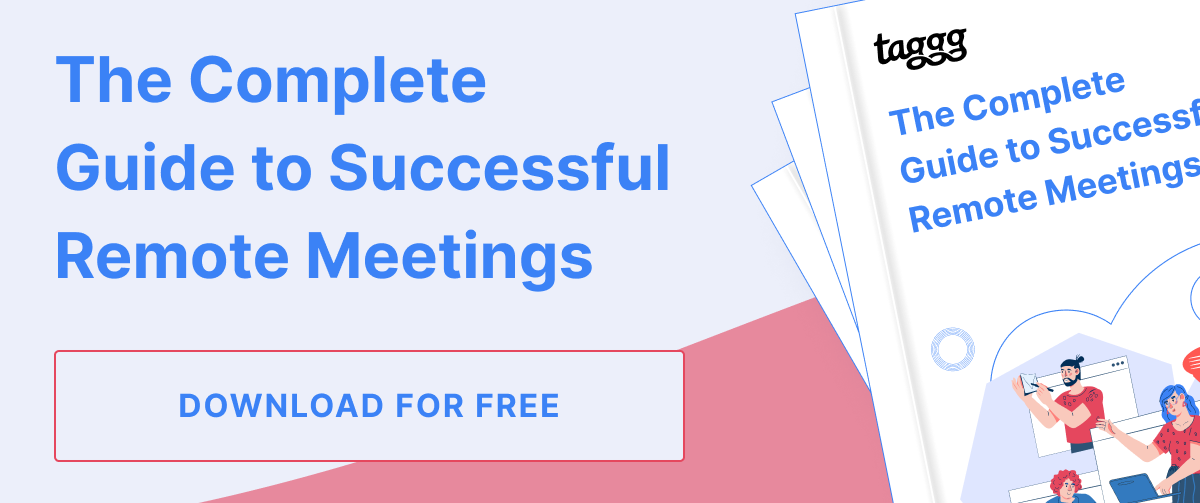Holding a meeting remotely has a lot of differences when compared with the traditional in-person meetings most people are used to. For starters, remote meetings are joined by participants who are residing in different parts of the country, and maybe even different parts of the world.
Remote meeting participants also have the ability to turn off their cameras and microphones during a meeting, which can lead to distraction. With the lack of in-person inclusivity, some of us are struggling to engage remote meeting participants and run a successful meeting.
So, what makes a remote meeting successful? A successful remote meeting will have all members mentally present and participating within the meeting. Participants will be engaged with one another, the content, and the speaker.
Remote meetings have the ability to be just as effective and productive as in-person meetings, if they are done properly. If you’re wondering how to engage remote meeting participants, you’ve come to the right place.
Below, we will be sharing remote meetings best practices, how to lead a meeting effectively, and a lot more. Let’s dive in!
1. Prepare the Agenda Well in Advance.
The not so surprising science of meetings - at least successful ones - is that preparation is key to running them. Create an outline that includes what content needs to be covered, what expectations you have for participants, and set a time frame for the meeting based on your needs.

By preparing for the meeting, you are setting yourself up for success. This ensures that everything will be covered and that you have gathered the necessary resources and information. Preparing for a meeting in advance will allow your meeting to run smoother and more efficiently.
2. Have a Backup Script
While you don’t want to be reading from a screen or paper for the entirety of the meeting, having a backup script handy will help the efficiency and success of your remote meeting. A backup script should include key concepts and points that need to be covered during the meeting.
This allows for the meeting to become open and conversational for all participants with the ability to get things back on track if they sway. This ensures that everything will be covered and participants get all of the information they need. Having a backup script promotes participant engagement by allowing them to speak up when needed and not having to worry about concepts being overlooked or forgotten.
3. Start the Meeting Well
This practice is the secret sauce of what makes a meeting successful. Many people make the mistake of not taking the start of a meeting seriously, but starting a remote meeting correctly is very important if you hope to accomplish anything.
We have an article dedicated to starting a remote meeting, that can be found here on our blog.
It’s important to start your remote meeting with purpose, a good tone, and to encourage participant interaction early on. During the start of a meeting, be sure to let participants know what your expectations are, what is going to be covered, and include an icebreaker to promote engagement.
4. Gather a Status Update
Gathering a status update is a great way to ensure progress and productivity are covered while also encouraging participation. A status update portion allows participants to discuss what has been happening in their personal work along with the work of their team members. This gives participants an opportunity to share progress, goals, and concerns.

By promoting participants to discuss their own work, thoughts, and concerns, you’re boosting engagement. The more participants speak and listen to other team members speak, the more comfortable they will feel about engagement within the meeting.
5. Be Clear About Problems and Expectations
There is no room for sugar coating or dancing around subjects in remote meetings. You need to be clear, concise, and specific about the content you’re presenting as well as problems and expectations for participants. People tend to respond better when they know what to expect, so doing this will help ease the tension within your meeting.
By being clear about problems, issues, and expectations, you are setting the tone for your meeting. Participants will feel more comfortable engaging when they know what is expected out of them.
6. Offer Help
If you notice that participants are struggling to understand or work through a concept or problem, offer them help! Reaching out a helping hand will ease participants’ nerves during the meeting and will make them feel more comfortable speaking up.
People don’t like to feel ridiculed or embarrassed for needing assistance, and people will avoid asking for help if they don’t feel comfortable doing so. Offering help right off the bat will promote a more comfortable space in your meeting, which will lead to more engagement.
7. Encourage and Answer Questions Courteously

On the same note, encourage participants to ask questions! Many people struggle to ask questions due to feelings of anxiety, shame, and embarrassment. By encouraging participants to ask questions, you are assuring them that they will be met with kindness. This boosts participant engagement by making them feel more comfortable speaking up.
8. Don’t Worry Too Much About the Clock, but Don’t Overshoot the Duration Unnecessarily
While you don’t need to be observing the clock during the entire meeting, it is good practice to try your best to not extend the meeting. If you notice that the end of a meeting is approaching and you know you have more things that need covered, always ask participants for permission to extend the meeting. By offering them permission, you are showing them that their time is important. This will make them feel respected, which boosts engagement.
9. End the Meeting on a Positive Note
The end of a meeting is just as important as the beginning of the meeting. Always end your meeting on a positive note to ensure participants leave feeling informed, listened to, and encouraged. We have an article dedicated to the importance of ending the meeting on a positive note and it can be found here.
By following these 9 tips, you’ll be well on your way to hosting successful remote meetings with great participation engagement. And, when you’re ready to host a remote meeting, we hope you will choose Taggg. Click here to get started for free.

